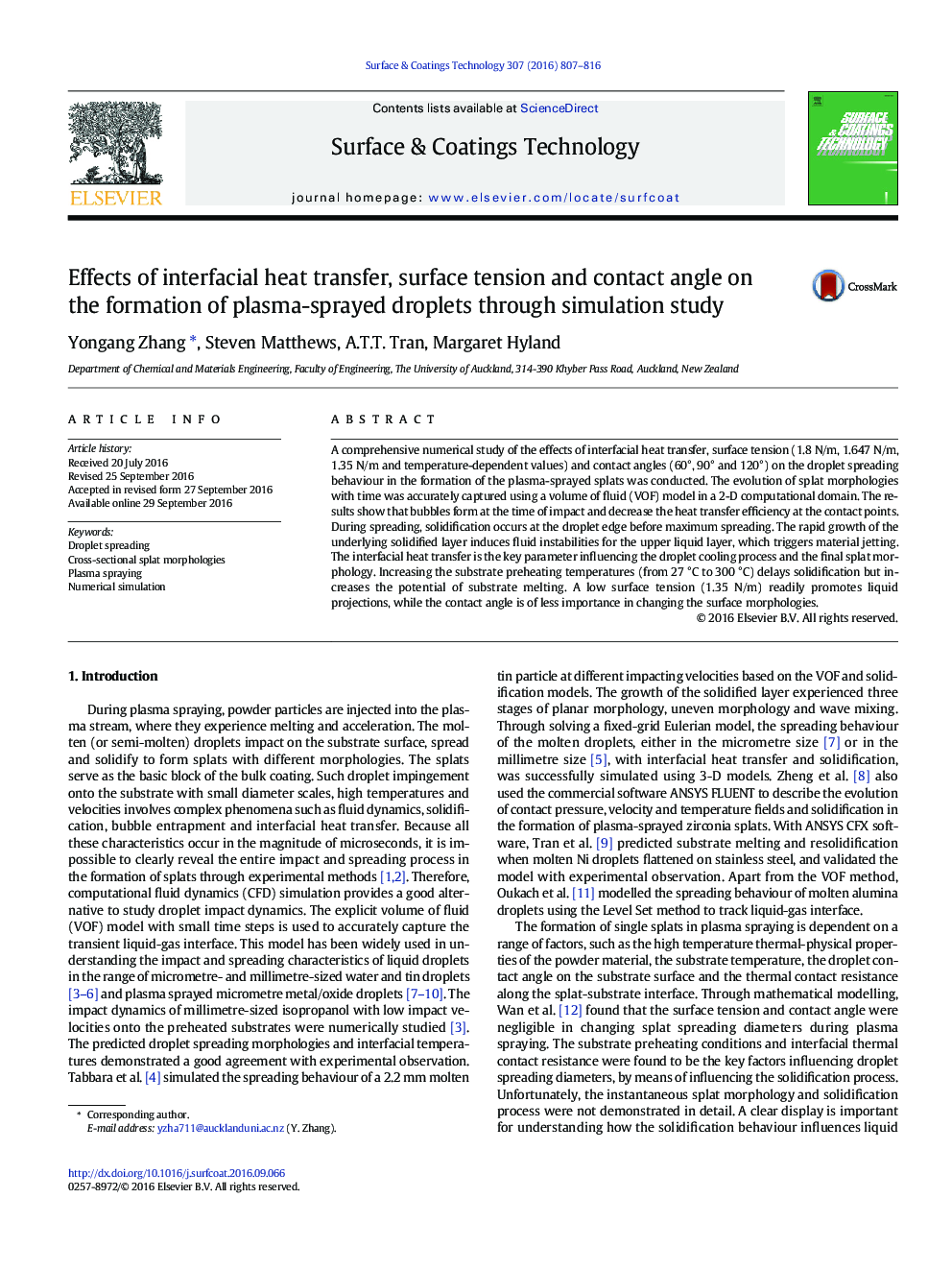| Article ID | Journal | Published Year | Pages | File Type |
|---|---|---|---|---|
| 6481498 | Surface and Coatings Technology | 2016 | 10 Pages |
â¢Droplet spreading behaviour in the plasma spraying process is numerically studied.â¢Modelling results are compared to experimental observation of Ni and Ni20Cr splats.â¢Interfacial heat transfer is the key factor influencing droplet spreading dynamics.â¢Higher We induced by surface tension changes promotes liquid jetting.â¢Droplet contact angles play an insignificant role in influencing splat diameters.
A comprehensive numerical study of the effects of interfacial heat transfer, surface tension (1.8 N/m, 1.647 N/m, 1.35 N/m and temperature-dependent values) and contact angles (60°, 90° and 120°) on the droplet spreading behaviour in the formation of the plasma-sprayed splats was conducted. The evolution of splat morphologies with time was accurately captured using a volume of fluid (VOF) model in a 2-D computational domain. The results show that bubbles form at the time of impact and decrease the heat transfer efficiency at the contact points. During spreading, solidification occurs at the droplet edge before maximum spreading. The rapid growth of the underlying solidified layer induces fluid instabilities for the upper liquid layer, which triggers material jetting. The interfacial heat transfer is the key parameter influencing the droplet cooling process and the final splat morphology. Increasing the substrate preheating temperatures (from 27 °C to 300 °C) delays solidification but increases the potential of substrate melting. A low surface tension (1.35 N/m) readily promotes liquid projections, while the contact angle is of less importance in changing the surface morphologies.
